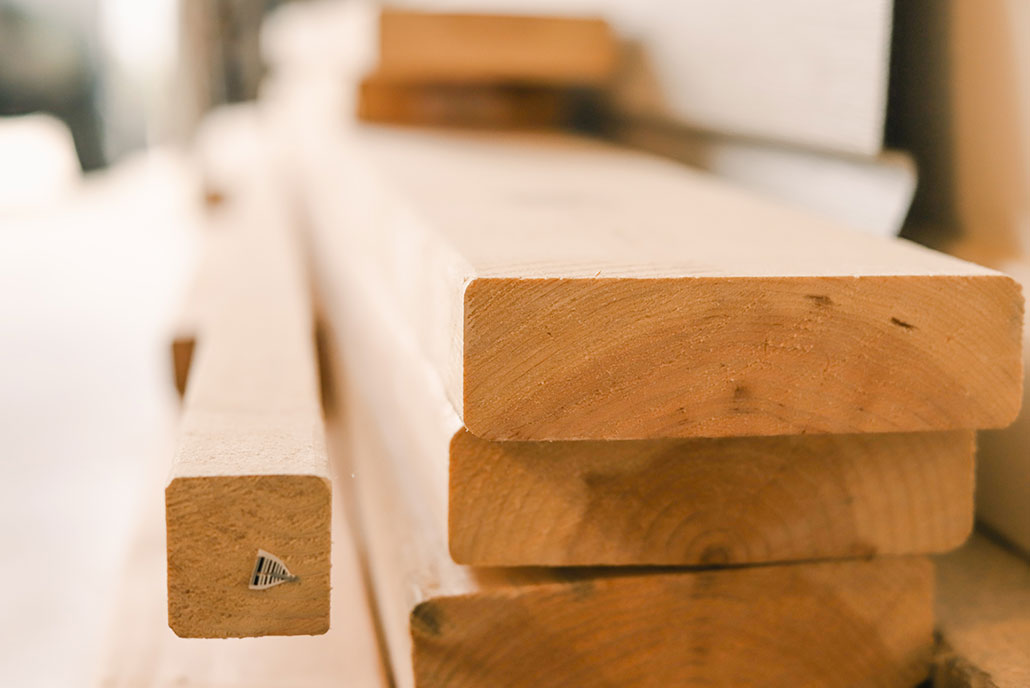Hardwood vs. Softwood: Which Type of Lumber Do I Need?

The key to any successful building project is starting with the right lumber. But if you’re new to purchasing lumber, you’d be surprised to learn that it’s a bit more of a process than just picking up a few pieces of wood. The type and quality of lumber you choose will have a dramatic impact on the functionality, durability, and appearance of your finished project.
Generally, all lumber can be categorized into two categories: hardwood and softwood. If you can first narrow your choice of lumber down to one of these two categories, you’re on the right track to a good build. Let’s explore the differences between hardwood vs. softwood in order to determine which type you need for your project.
Hardwood Lumber
Hardwood lumber is derived from deciduous trees, which are the ones that lose their leaves each fall. Some of the common types of hardwood include hickory, teak, maple, walnut, oak, and mahogany.
In most cases, these hardwood trees grow quite slowly, which allows them to display dark, intricate grain patterns. It also gives the lumber a high density, making it the most strong and durable choice. Hardwood lumber won’t easily dent or break, so it’s ideal for applications that require long-lasting performance and/or appeal. However, you’ll end up paying for that extra strength, as hardwood lumber generally costs more than others.
Softwood Lumber
Softwood lumber comes from coniferous, evergreen trees that keep their leaves, or needles, throughout the entire year. This includes trees like cedars, spruces, pines, and firs.
Softwood trees tend to grow a bit faster than hardwood trees, so the lumber usually has straighter grains and is a bit lighter in appearance. It’s also less dense and absorbs and loses moisture quickly, which means it’s not quite as durable and requires more care to keep it performing well and looking beautiful.
Because of their fast growth rates, softwood trees are much more abundant, and therefore the more affordable lumber option.
Hardwood vs. Softwood Lumber: Which Should I Use for My Application?
Now that we’ve walked through the differences between hardwood vs. softwood lumber, we can help make an informed decision on which option would be best for your specific application. When making this decision, it’s important to know your goals for the project and exactly how the lumber will be used.
Hardwood Lumber Applications
As mentioned previously, hardwood lumber is best for applications where longevity and aesthetics are major factors in your project’s success. For these reasons, it’s commonly used in applications like:
- Flooring
- Furniture making
- Cabinetry
- Fine woodworking
Softwood Lumber Applications
Softwood lumber may not be quite as durable as hardwood, but it’s still strong enough for many projects. In fact, its straight grains and affordability make it a versatile choice for both DIY projects and large building projects. You’ll find softwood lumber commonly used in applications like:
- Interior moulding
- Window framing
- Construction framing
- Sheathing
- Paneling
Get the Best Materials for Your Application By Shopping Our Fully Stocked Lumber Yards
No matter which type of lumber you need, Standard Supply & Lumber can help. Each of our five full-service lumberyard locations is fully stocked, and there’s always a friendly team of our experts there to help you find what you need. As a rule, we guarantee quality materials, professional advice, and outstanding service to each of our customers. Call us or contact us online today.
